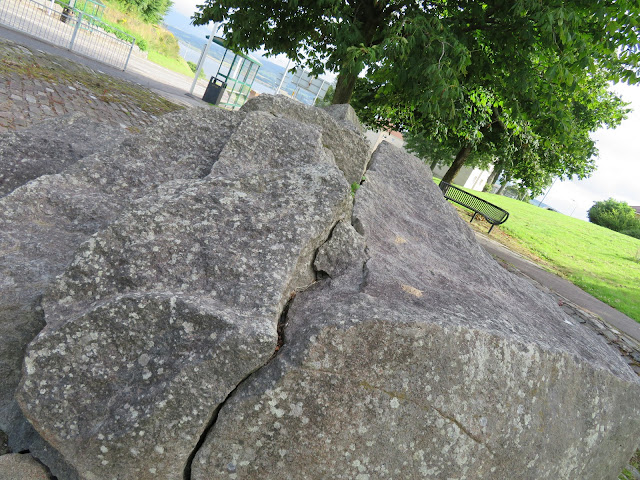The Anchor Inn was possibly one of the first ever hotels in Greenock. It was situated on Shaw Street (east of William Street in what is now Dalrymple Street). This photograph was taken just before the building was demolished in the late 1870s under an Improvement Scheme.
The photograph is one of a collection of photographs held by the Watt Institution and displayed on the Inverclyde Council website here. On the Fine Art Collection website is also a wonderful pencil drawing (1879) of the Anchor Inn by Greenock artist Patrick Downie (1854-1945). It shows a vibrant street scene and you can view it here. The Anchor Inn was described as "a building of three square storeys, surmounted by a pediment elaborately executed, having on its apex at least three solid stone urns which were the salient features of the building."
Greenock's Anchor Inn was situated on Shaw Street across from the East Harbour and was reached by a passage from the East Harbour head. On its east was East Quay Lane. These old streets and lanes can be viewed on old street maps of Greenock which you can find online at the National Library of Scotland's website.
It is thought that the Anchor Inn dates from the early 1700s and frequented by travellers by land and sea. It had a stable for carrier's horses - taking goods from ships in the harbour to places around Scotland. Stage coaches also stopped there - bringing merchants and travellers to the town. The Inn had a large hall for public events and entertainments. Auctions, property sales, balls, dances, and theatrical events would have been part of the Anchor Inn's function.
However, as Cathcart Street gradually became Greenock's commercial centre and as more modern inns were opened, the Anchor Inn's reputation suffered. That part of Greenock, once the hub of commerce and trade, became much more crowded and dirty. The Inn became known as the Anchor Tavern and its complex of buildings became Anchor Inn Close - overcrowded, delapidated and the haunt of the poorer members of society. It was reported that a family of seven lived in one apartment in the Close and a "wretchedly clothed daugher" of the family was apprehended going from door to door asking for money. Disease and crime were rife. By the 1860s, Greenock Town Council were trying to take action to improve the overcrowded areas of the town. One step was to try and force landlords to introduce sanitary provisions in their properties - without much success.
In 1870 the Anchor Inn was put up for sale.
By 1879 the buildings had been scheduled for demolition by the town council. Under the Improvement Trust, the worst areas of the town were selected - The Vennel, Dalrymple Street, the Bell Entry, the Dock Entry, anchor Inn Close and some other areas.
As can be seen from the photograph at the top of this post, demolition of the area was well under way when the photograph was taken. The stone urns on the pediment of the building were purchased by C D Lamont and presented to Colonel John Stewart to decorate his garden.
For more old photographs of Greenock check out the Inverclyde Council Website Collections Online page.







































